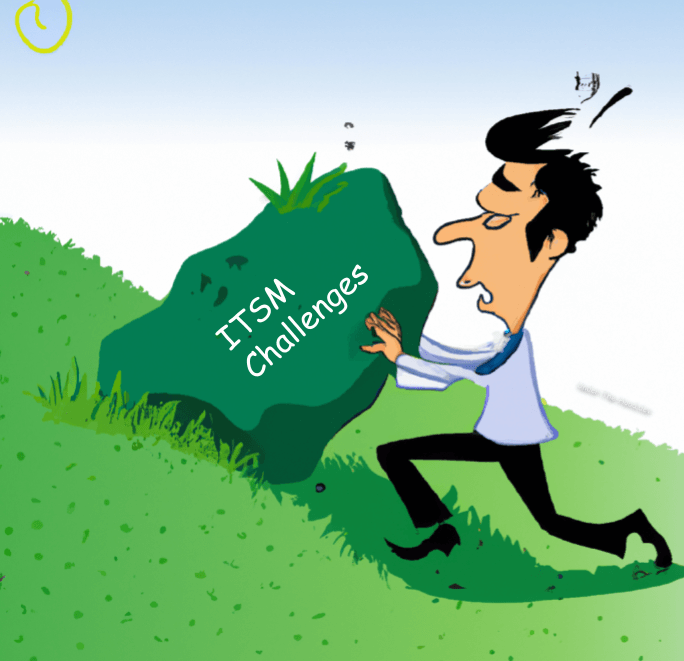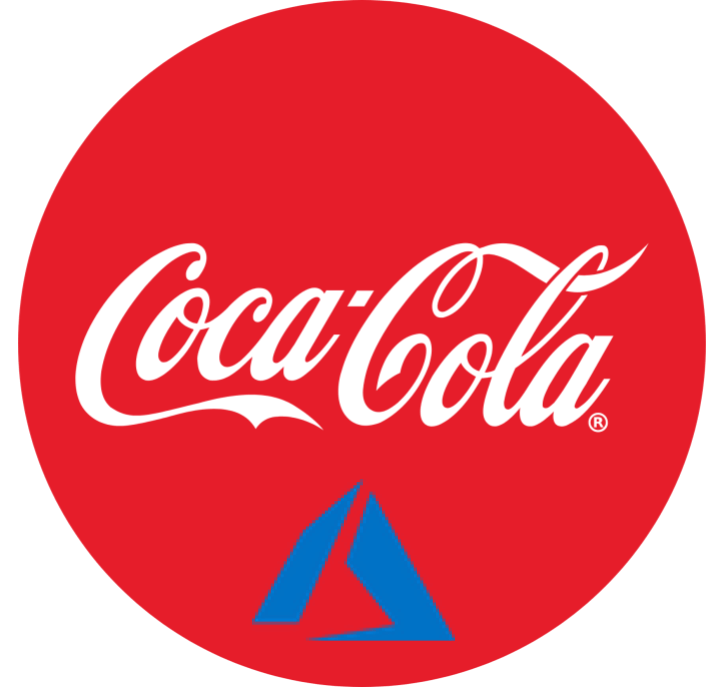In this article, we’ll review two very close concepts that can improve your customers’ satisfaction.
- ITIL, or Information Technology Infrastructure Library, is a globally recognized framework that provides best practices for IT Service Management.
- ITSM, or IT Service Management, in turn, refers to the management of IT services provided to customers, ensuring that the right mix of people, processes, and technology is in place to meet business objectives. It offers a systematic approach to helping organizations to
- improve efficiency
- reduce risks
- and enhance customer satisfaction.
The ITIL framework was developed by the UK government in the 1980s and has since evolved into a comprehensive set of best practices that are continually updated to stay relevant in the ever-changing IT landscape.
It is now maintained by the ITIL Certification Management Board, which ensures the framework remains up-to-date and relevant.
ITSM, on the other hand, is a broader concept that encompasses the entire spectrum of IT service delivery, from planning and design to operation and continuous improvement.
What is IT Service Management
IT Service Management is a discipline that focuses on the effective and efficient delivery of IT services to an organization’s customers. It is a customer-centric approach that aims to align IT services with the needs of the business and its customers.
It is not just about technology but also involves the management of
- people
- processes
- and data
to ensure the successful delivery of IT services.
ITSM encompasses various aspects of service management, including
Each of these areas has its processes, roles, and tools to ensure the smooth functioning of IT services.
Importance of ITSM in Modern Businesses
ITSM helps businesses improve their service delivery by
- identifying and eliminating inefficiencies
- reducing risks, and enhancing the overall quality of IT services. By implementing the best practices, businesses can
- ensure that their IT services are reliable, secure, and cost-effective.
- respond quickly to changing business needs and customer expectations, making them more agile and competitive in the marketplace.
The distinction between Service Management and Infrastructure Library primarily lies in the connection between the two concepts. IT Service Mamagement refers to the way an organization administers its IT services, while ITIL serves as a blueprint for ITSM, outlining a particular set of processes and recommendations for delivering IT services.
Key Components of the ITIL Framework
The ITIL framework consists of five core publications, each focusing on a different aspect of IT service management. These are:
Service Strategy
This component provides guidance on defining the strategy for IT services, aligning them with business objectives, and ensuring they deliver value to customers. It covers processes such as
- service portfolio management
- financial management for IT services
- and demand management.
Service Design
This component focuses on the design of new or modified IT services, ensuring they meet customer requirements and are aligned with the organization’s strategy. Key processes include
- service catalog management
- service level management
- and capacity management.
Service Transition
This component addresses the transition of IT services from the design stage to the live environment. It ensures that new or modified services are effectively introduced, minimizing risks and disruptions to the business. Processes include
- change management
- release and deployment management
- and knowledge management
Service Operation
This component covers the day-to-day management of IT services, ensuring they are delivered efficiently and effectively. It includes processes such as
- incident management
- problem management
- and event management
Continual Service Improvement
This component focuses on the ongoing improvement of IT services, identifying and implementing opportunities for enhancing service quality, efficiency, and effectiveness. Key processes include
- the seven-step improvement process
- and the continual service improvement (CSI) model.
The 19 Service Management Gems of ITIL
IT Infrastructure Library provides a comprehensive set of best practices that can help organizations improve their strategy. These strategies include:
- Focus on customer needs and expectations
- Align IT services with business objectives
- Adopt a service lifecycle approach
- Implement a service portfolio management process
- Design services based on customer requirements and business outcomes
- Establish and manage service level agreements (SLAs)
- Implement effective change management practices
- Ensure smooth transition of new or modified services
- Monitor and manage IT service performance
- Implement problem management to prevent recurring issues
- Establish and maintain a service catalog
- Use ITSM tools to automate processes and enhance efficiency
- Develop and maintain an IT service continuity plan
- Manage IT service costs and budgets
- Utilize ITIL’s seven-step improvement process
- Foster a culture of continuous learning and improvement
- Train and develop Service Management professionals
- Collaborate with external partners, such as ITSM consultants and managed service providers
- Stay informed about emerging trends and technologies in IT service management
Benefits of Implementing ITIL Best Practices
Implementing IT Infrastructure Library best practices can provide numerous benefits to organizations, including:
- Improved IT service quality: By adhering to best practices, organizations can enhance the quality of their IT services, ensuring they meet customer requirements and support business objectives.
- Reduced IT costs: ITIL provides guidance on managing IT service costs and budgets, helping organizations optimize their IT investments and reduce unnecessary expenses.
- Enhanced customer satisfaction: By focusing on customer needs and expectations, the framework helps organizations deliver IT services that meet or exceed customer expectations, leading to higher levels of satisfaction and loyalty.
- Increased agility: the Infrastructure Library enables organizations to respond quickly to changing business needs and customer expectations, making them more agile and competitive in the marketplace.
- Improved risk management: ITIL provides guidance on identifying and managing risks associated with IT services, helping organizations minimize disruptions and ensure the continuity of their IT services.
- Greater efficiency: By implementing these practices, organizations can streamline their ITSM processes, eliminate inefficiencies, and enhance the overall efficiency of their IT service delivery.
ITIL Certification Levels and Their Significance

Information Technology Infrastructure Library offers a certification scheme that enables IT professionals to demonstrate their knowledge and expertise in IT service management:
- Foundation: entry-level certification, aimed at individuals who need a basic understanding of the framework and its key concepts. The Foundation certification is a prerequisite for the higher levels of ITIL certification.
- Practitioner: is designed for IT professionals who have a solid understanding of the framework and want to develop their practical skills in implementing and managing IT services using the best practices.
- Intermediate: is aimed at IT professionals who want to specialize in specific aspects of IT service management. There are two streams within the Intermediate level: Service Lifecycle and Service Capability, each consisting of multiple modules.
- Expert: is designed for individuals who have achieved a deep understanding of ITIL and can demonstrate their expertise in applying the framework in complex environments.
- Master: This is the highest level of ITIL certification, designed for individuals who have achieved a deep understanding of the framework and its application in real-world situations. To achieve this certification, individuals must have:
- obtained a minimum of 5 years of experience working in SM
- achieved the Expert certification
- demonstrated their mastery of ITIL through a rigorous assessment process.
The certification can help IT professionals advance their careers, demonstrate their ITSM expertise, and increase their value to their organizations.
Tips for Successful ITSM Implementation
Here are some tips to help you get started:
- Secure executive support: Gaining the support of senior management is crucial. Executive sponsorship can help ensure the necessary resources and commitment are available to implement ITSM best practices and drive organizational change.
- Develop a clear strategy: A well-defined strategy provides a roadmap for aligning IT services with business objectives. It should include clear objectives, priorities, and timelines for your initiatives.
- Train and develop professionals: Investing in training and certification for your IT staff can help ensure they have the necessary skills and knowledge.
- Establish a strong governance framework: Implementing a robust governance framework can help ensure that processes are consistently followed and IT services are aligned with business objectives.
- Communicate and engage with stakeholders: Regular communication and engagement with stakeholders can help ensure their buy-in and support for the initiatives. This includes
- providing regular updates on the progress
- addressing concerns
- and soliciting feedback to drive continuous improvement.
- Continuously measure and improve: Establishing a process for regularly measuring your ITSM performance and identifying opportunities for improvement is essential for long-term success.
Overcoming Common ITSM Challenges

Implementing ITSM best practices can present several challenges for organizations. Some of the most common challenges include:
- Resistance to change: such initiatives often involve significant organizational change, which can be met with resistance from staff. Overcoming this resistance requires strong leadership, effective communication, and a commitment to ongoing training and development.
- Lack of resources: Implementing IT Service Management best practices requires a significant investment in time, budget, and personnel. Organizations must ensure they have the necessary resources available to support their ITSM initiatives.
- Insufficient skills and knowledge: it also requires specialized skills and knowledge, which may not be readily available within the organization. Investing in training and certification can help address this challenge.
- Ineffective governance: Organizations must establish clear roles, responsibilities, and processes to support effective governance.
- Integrating with other frameworks and methodologies: organizations must ensure that their ITSM strategy is aligned with other frameworks and methodologies and that they have a clear plan for integrating ITSM with other systems.
To overcome these challenges, companies need to take a holistic approach to the implementation. This involves addressing not just the technical aspects of the problem but also the cultural, organizational, and process-related issues that can impact ITSM’s success.
Aligning ITSM Strategy with Business Goals
One of the primary objectives of ITSM is to align IT services with the organization’s business goals. By aligning IT services with business goals, organizations can ensure that their IT investments are focused on delivering value and supporting the organization’s mission. These tips will improve this alignment:
- Develop a clear understanding of the organization’s
- strategy
- objectives
- and customer requirements
- Define IT service objectives and key performance indicators (KPIs) that support business goals
- Establish a service portfolio management process to prioritize and manage IT services based on their contribution to business objectives
- Design IT services to meet customer requirements and support business outcomes
- Implement service level agreements (SLAs) with customers to ensure the delivery of services that meet their expectations
- Continuously monitor and improve IT service performance to ensure alignment with business goals
Integrating ITSM with Other Frameworks and Methodologies

To integrate IT Service Management with other frameworks and methodologies, such as DevOps, Agile, and Lean, organizations should:
- Identify areas of overlap and synergy: Assess how ITSM can complement and support other frameworks and methodologies, and identify areas where there is overlap or synergy.
- Develop an integrated approach to IT service delivery that incorporates Service Management best practices and other frameworks and methodologies.
- Establish clear roles and responsibilities for ITSM and other frameworks and methodologies to ensure that they work together effectively.
- Ensure consistent processes and practices: Ensure that processes and practices are consistent across all frameworks and methodologies to avoid duplication and confusion.
- Continuously measure and improve the integrated approach to IT service delivery, identifying opportunities for improvement and addressing any issues that arise.
IT Service Management Tools and Software Recommendations
There are many tools and software solutions available on the market, each with its strengths and weaknesses. When selecting the tools and software, organizations should consider:
- Their requirements: Identify the specific ITSM requirements that the tool or software must address, such as
- incident management
- problem management
- and change management.
- Integration with other systems: If required, ensure the tool or software can integrate with other systems, such as
- IT Service management frameworks
- IT management systems
- and other business applications.
- Ease of use: Look for tools and software that are user-friendly and easy to use, reducing the learning curve and minimizing the risk of errors.
- Scalability: Ensure the tool or software can scale to accommodate the organization’s growth and changing ITSM needs.
- Vendor support and reputation: Choose a vendor with a good reputation for customer support and service, ensuring that help is available when needed.
Some popular ITSM tools and software solutions
- ServiceNow. A cloud-based platform that offers a wide range of modules for IT service management, such as incident management, change management, problem management, and service catalog.
- BMC Helix ITSM is the next generation of BMC Remedy built on a modern, container-based architecture that is designed to be more scalable, flexible, and agile. Helix includes additional capabilities such as cognitive service management, which uses artificial intelligence and machine learning to automate tasks and improve service delivery.
- Jira Service Management (formerly known as Jira Service Desk) is a Service Management tool that provides features such as incident management, problem management, change management, asset management, and service catalog. It integrates with other Atlassian products, such as Jira Software and Confluence, to provide a seamless user experience for IT teams.
- and Freshservice – a cloud-based platform that offers a modern and intuitive user interface, along with features such as incident management, change management, problem management, and asset management.
Case Studies: How Businesses Have Transformed with ITIL
Numerous businesses have transformed their strategy by implementing Information Technology Infrastructure Library best practices. These case studies demonstrate the benefits of ITIL implementation and how it can support business objectives.

Coca-Cola implemented the framework to improve its IT service delivery, reducing the number of incidents and improving customer satisfaction.
By aligning IT services with business objectives, Coca-Cola was able to achieve greater transparency, accountability, and efficiency in its IT operations.

Lloyds Banking Group improved its IT service management, reducing the number of IT incidents and improving customer satisfaction.
By adopting a service lifecycle approach, Lloyds was able to ensure that its IT services were aligned with business objectives and customer needs.

Procter & Gamble improved its IT service delivery, reducing costs and improving customer satisfaction.
By establishing clear processes and procedures, Procter & Gamble was able to enhance the reliability and consistency of its IT services, supporting its business objectives

Unilever implemented the framework to improve its IT service management, reducing the number of IT incidents and improving customer satisfaction.
By adopting a customer-centric approach, Unilever was able to align its IT services with business objectives and customer needs, enhancing its competitiveness in the marketplace.
Measuring the Success of Your Strategy
There are several metrics to measure the success of the strategy, including:
- Service level agreements (SLAs): SLAs define the level of service that IT will provide to customers, including response times, uptime, and performance metrics.
- Customer satisfaction: Customer satisfaction surveys can provide valuable feedback on the quality of IT services and how well they are meeting customer needs.
- Incident and problem resolution times: Measuring the time it takes to resolve incidents and problems can help organizations
Conclusion
We reviewed the key concepts of the IT Infrastructure Library and SM, their importance for enterprise customer satisfaction and cost optimization, and learned a few case studies where this methodology was beneficially applied by top companies.
While this topic does not directly address all aspects of Enterprise Architecture, it does provide guidance on how IT service management can be integrated with an organization’s overall business strategy and goals. In this sense, ITIL can be seen as one of the many frameworks and practices that can contribute to the overall Enterprise Architecture of an organization.
It is worth noting that many organizations that adopt ITIL also use other frameworks and practices, such as COBIT, TOGAF, and BPMN, to achieve a more comprehensive approach to Enterprise Architecture.
If you still have questions, leave your comments or Connect with us via The Feedback Form.
